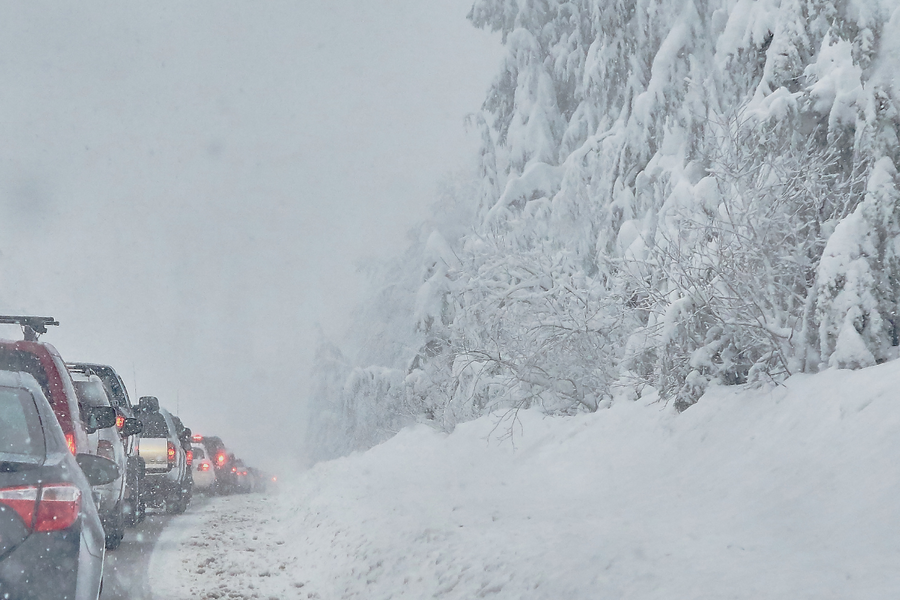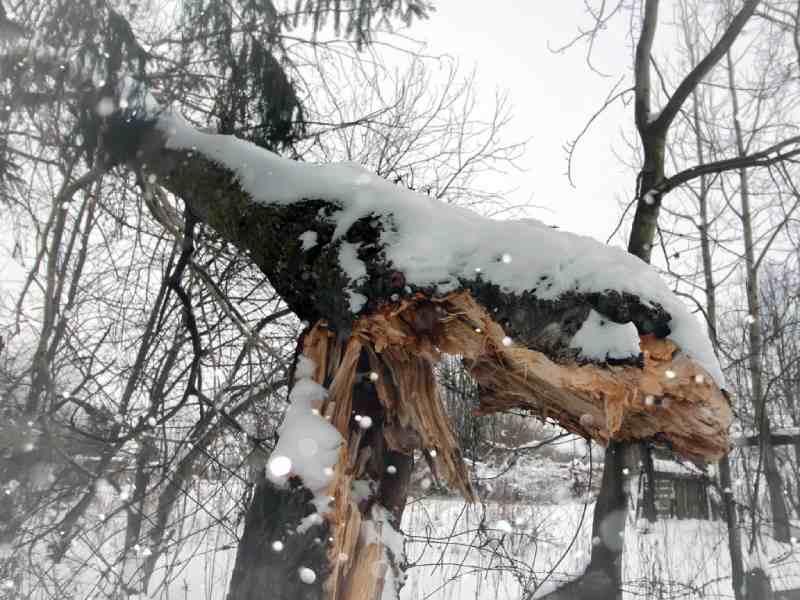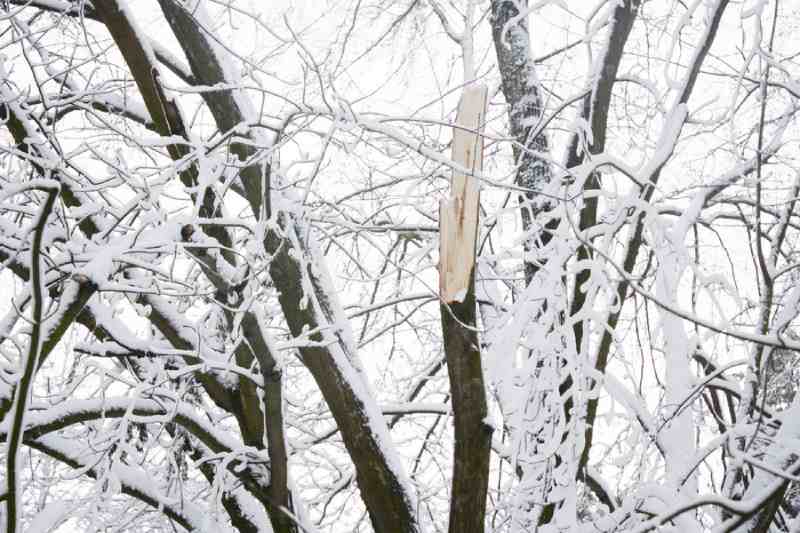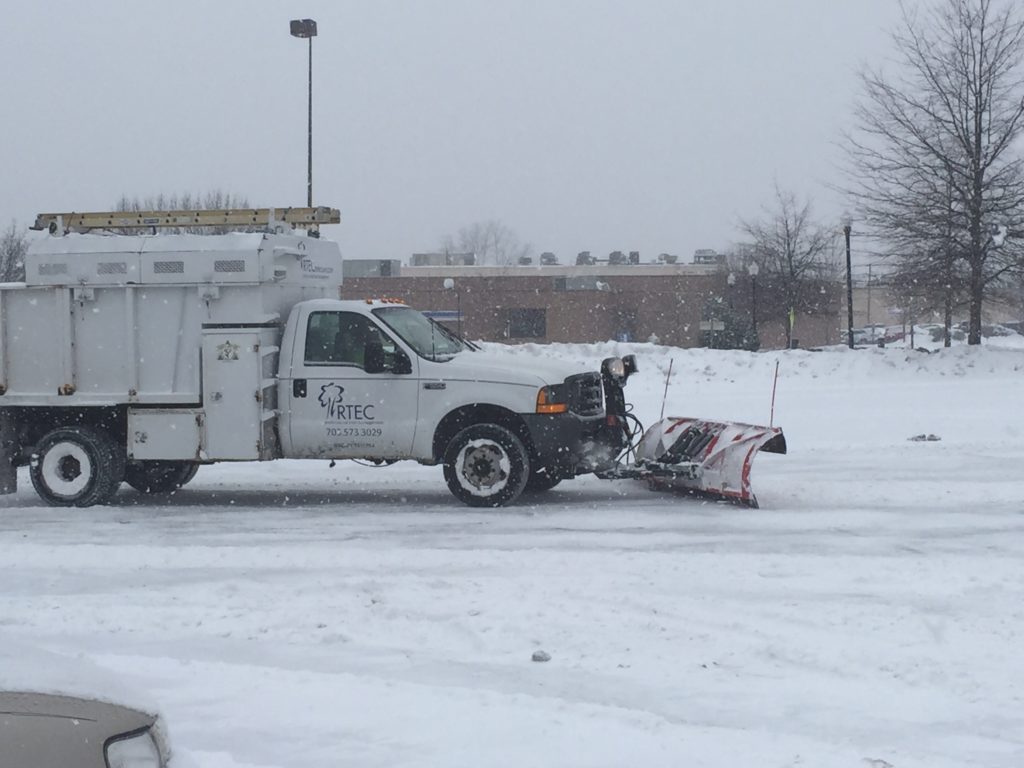In recent years, winter in the DC area has become stormier and more unpredictable. Whether we experience a light flurry or a white-out blizzard, it is important to make sure our yards are ready for whatever weather is on the way! Recent winter weather changes have impacted trees and shrubs tremendously with broken limbs, uprooting, and severe leaning. Due to this, intervention is essential to keeping our landscapes thriving and keeping ourselves safe.

Why are Winter Storms so Dangerous for Trees in the DC area?
No matter if you’re in an urban or rural area, winter storms present a hazard to all yards. While rural yards tend to be more spacious, meaning trees are less likely to hit something if they do fall, rural areas often do not get as much assistance during winter storms as urban areas do. Back-= roads and rural streets are not prioritized during salting or snow removal efforts. On the other hand, metropolitan areas receive more attention in emergencies but have cramped yard spaces with little room for trees to fall without impacting a structure or powerline. Regardless of where you live, there are precautions we can all take to stay safe from winter storms this year!
Three main types of winter storm events affect our area: blizzards, ice storms, and Nor’easters.
Blizzards: a winter storm is considered a blizzard when wind exceed 35mph, visibility is reduced to less than a 1/4 mile, and of course heavy snowfall.
Ice Storms: these storms are caused by large amounts of freezing rain, causing ice to accumulate on surfaces. Aside from making roads and walkways extremely dangerous, ice can increase the weight of branches by 30 times!
Nor’easters: the most powerful and daunting storm on this list! Nor’easters can refer to any large storm event (not just winter related) along the northeast coast, but often is a combination of blizzards, rain, flooding, and heavy winds.
Native versus Non-Native Tree Species in Winter Weather

Native trees are those which have historically originated from an area. This means they have spent centuries adapting to the climate, soil, and lifestyle there. These trees have gone through trial and error as they accommodate their environment, and as a result, they are more equipped to deal with the weather events in that area.
Non-native trees are not acclimated to the area and are more susceptible to harsh changes in weather. We recommend opting for native species when adding to your yard. It gives your trees a fair chance at survival and will save you money from having to replace trees annually!
What Types of Tree Damage do Icy Conditions Cause?
The damage caused by icy conditions and winter storms seems endless. From shrubs to mature trees, no plant can escape the effects of a harsh winter.
Common Damage to Trees from Cold Weather:
- Uprooted trees and shrubs
- Frost Cracks/Sunscald
- Salt Damage
- Broken branches/limbs
- Canopy Dieback
- Falling Trees
- Windburn (desiccation)
- Bark Discoloration
- Insect Infestations & Disease

How to Prevent Tree Damage from Winter Storms
Since we can’t always accurately predict when there will be a serve weather event, being prepared is the best safety measure we can take. Here are several steps we can take to help protect our trees during winter storms.
Pruning. Perhaps the best thing you can do is have a professional come out to assess your trees to determine if there are any dead limbs or fragile branches. The weight of snow and ice can cause weak limbs to break and become a hazard. Have our crew clear out any deadwood or weak branches ahead of time!
Wrapping. While temperatures plummet during winter storms, the contrast of having direct sunlight on a tree can result in sunscald. By wrapping your trees (preferably in an eco-friendly material), you can prevent damage to the tissues of the bark. You can learn more about how to wrap trees here.
Cabling. If an arborist determines that a tree’s structure is weak or unstable, they may recommend cabling or bracing to help secure the tree in preparation for a storm. While cabling won’t repair a tree, it adds significant support to the structure!
Mulching. Applying mulch at the right time can help protect your tree’s roots throughout harsh winter weather!
Removal. If you have dead or decaying trees on your property, having those trees removed before the winter winds can tip them over will prevent any additional damage or harm to your property. A standing dead tree is a liability, and the longer it stands the more dangerous it becomes. Don’t wait until it’s too late.
In addition to these steps, RTEC’s Winter Protection Program combats winter stress symptoms as well as provides the added benefits listed below.
- Prune Less Often
- Improve resistance to environmental stress such as extreme temperatures, poor soil, drought, & flooding.
- Keep trees from encroaching on structures & power lines
- Lower maintenance costs: reduce related pruning, watering, and fertilizer costs.
- Enhance root and foliage development
- Improve tree’s ability to recover from disease & insect damage
- Decrease tree’s susceptibility to diseases & insects
Want more tips on helping your yard survive the winter? Check out our blog on winter protection here!

Strategies to Help Trees Recover from Winter Storm Damage
The best thing you can give trees that have sustained damage is Bio-Stimulants! Our all-natural liquid fertilizer boosts your tree’s ability to uptake water and nutrients, allowing it to recover faster. If your yard experienced serve damage, we recommend having one of our certified arborists come out to assess the work that needs to be done to recover your yard. Before it gets to that point, schedule a consultation with a certified arborist to find out what your customized winter protection program would look like!




